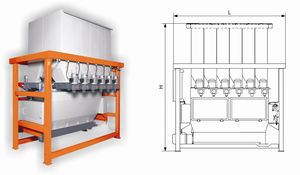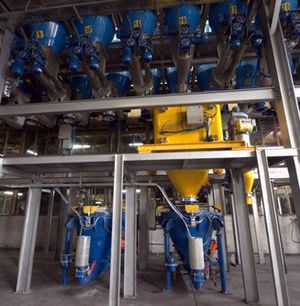Microdosing Systems
Microdosing System is a technique for studying the behaviour of drugs in humans through the administration of doses so low they are unlikely to produce whole-body effects, but high enough to allow the cellular response to be studied. This allows us to see the Pharmacokinetics of the drug with almost no risk of side effects.This is called a Phase 0 study and is usually conducted before clinical Phase I to predict whether a drug is viable for the next phase of testing. Human microdosing system aims to reduce the resources spent on non-viable drugs and the amount of testing done on animals. The term microdosing is different than microdispensing.
Techniques
The basic approach is to label a candidate drug using the radioisotope carbon-14,and then administer the compound to human volunteers at levels typically about 100 times lower than the proposed therapeutic dosage .How the body responds – for example, its conversion of the original drug into other molecules, and how long they stay in the body. The amount of radioactivity administered is typically around 200 nano Curies, which is low as to be considered non-radioactive by authorities.
As only microdose levels of the drug are used, analytical methods are limited. Extreme sensitivity is needed. Accelerator Mass Spectrometry is the most common method for microdose analysis. AMS arose in the late 1970s from two distinct research threads with a common goal: an improvement in radiocarbon dating that would make efficient use of datable material and that would extend the routine and maximum reach of radiocarbon dating. AMS is routinely used in geochronology and archaeology, but biological applications began appearing in 1990 mainly due to the work of scientists of Lawrence Livermore National Laboratory. AMS service is now more accessible for biochemical quantitation from several private companies and non-commercial access to AMS is available at the National Institutes of Health (NIH) Research Resource at Lawrence Livermore National Laboratory, or through the development of smaller affordable spectrometers. AMS does not measure the radioactivity of carbon-14 in microdose samples. AMS, like other mass spectrometry methods, measures ionic species according to mass to charge ratio.
The technique has been developed commercially and in 2005, trials were conducted with several major pharmaceutical companies in the CREAM (Consortium for Resourcing and Evaluating AMS Microdosing) trials, in which microdosing was used to predict the behaviour of five drugs, each with idiosyncrasies that had proved problematic in animal testing. The results pointed to a 70 per cent correspondence between the results obtained using microdosing and those obtained from full-dose studies. In 2006 an EU-funded Microdosing collaboration was formed to test the relationship between a microdose and therapeutic dose of another seven drugs.
Impact of use
It is reported that 15 of the 20 largest pharmaceutical companies have now used microdosing in drug development, and the use of the technique has been provisionally endorsed by both the European Medicines Agency and the Food and Drug Administration. Furthermore it is expected that by 2010, human microdosing will have gained a secure foothold at the discovery-preclinical interface driven by early measurement of candidate drug behavior in humans and by irrefutable economic arguments.
In January 2006, the European Union Microdose AMS Partnership Programme (EUMAPP) was launched. Ten organizations from five different countries (United Kingdom, Sweden, Netherlands, France and Poland) will study various approaches to the basic AMS technique. The study is set to be published in 2009.

